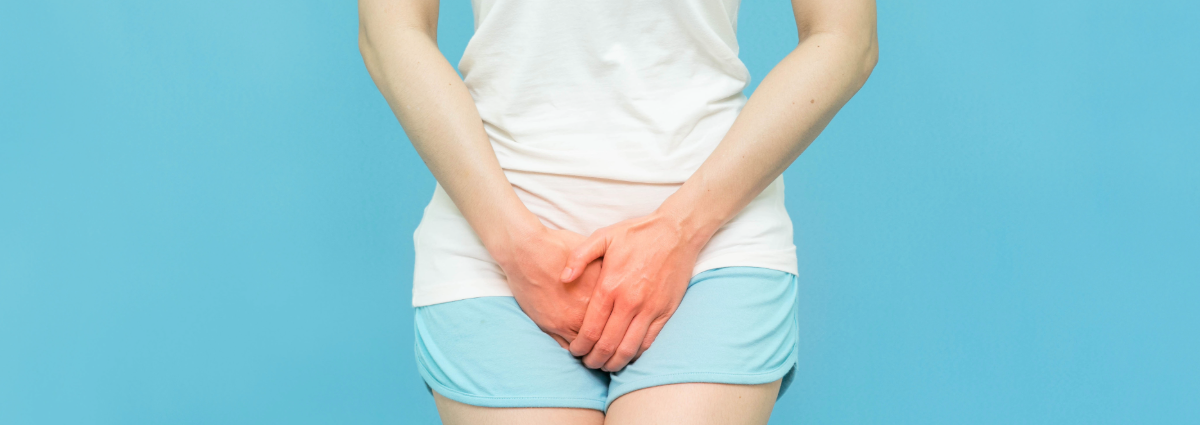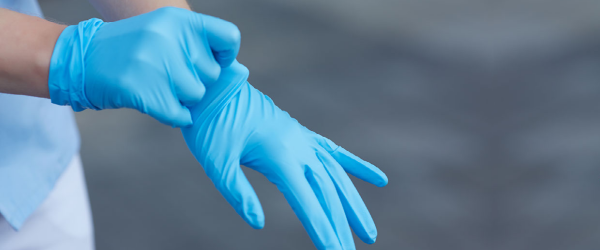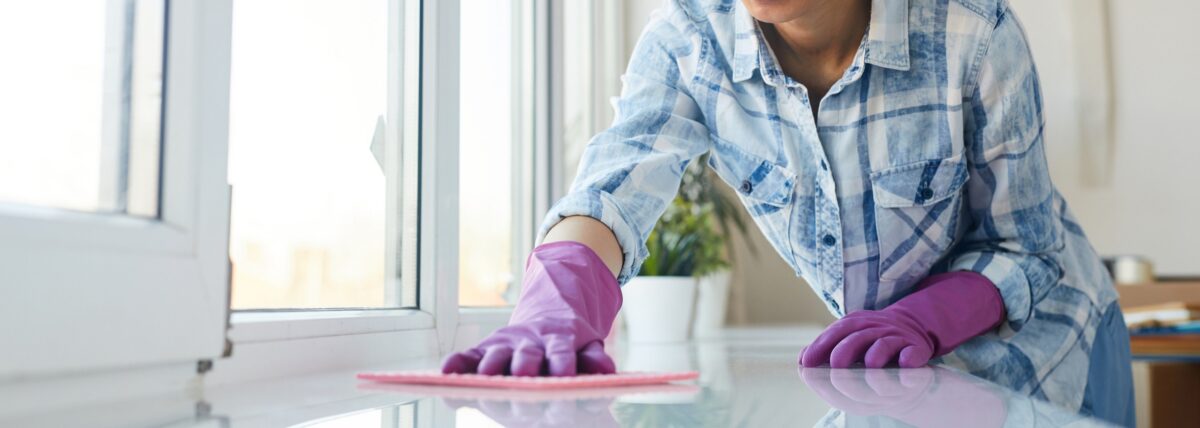Posts Tagged ‘kitchener’
Posted on: February 8th, 2024 by physioathand

Pelvic health is a crucial aspect of overall well-being that often goes overlooked. Many of us have unknowingly adopted habits that may seem harmless but can negatively impact your pelvic health. Read on to find out what those habits are in order to avoid them down the road.
1. Peeing Just in Case
Many people, especially those with busy lifestyles, may feel the need to empty their bladder even when they don’t feel a strong urge. However, frequent unnecessary trips to the bathroom can lead to weakened pelvic floor muscles over time. The pelvic floor is a group of muscles that support the bladder, urethra, and other pelvic organs. Peeing “just in case” can contribute to muscle dysfunction and may lead to issues such as urinary urgency and incontinence.
2. Restricting Fluids to Avoid Leaking
It’s estimated that 1 in 3 to 4 women have urinary incontinence. While it may seem counterintuitive, limiting fluid intake to prevent urinary leakage is not actually a healthy practice. When you restrict fluids, urine becomes more concentrated, irritating the bladder and potentially leading to urinary tract infections. Staying properly hydrated is essential not just for your overall health, but for supporting your pelvic organs and optimal urinary function as well.
3. Hovering Over a Toilet
Many of us do it! Hovering over a toilet seat in public restrooms (also known as hover peeing) in order to avoid direct contact with potentially unclean surfaces. Why not, right? But not so fast! Hover peeing puts strain on the pelvic floor muscles and can lead to incomplete bladder emptying, contributing to pelvic muscle tension and pelvic floor dysfunction over time.
4. “Speed Peeing”
Some people tend to forcefully push urine out during urination. This habit can strain the pelvic floor muscles. Instead of pushing, focus on relaxing and letting the urine flow naturally. Gentle, controlled urination helps maintain the integrity of the pelvic floor muscles and supports overall pelvic health.
5. Straining to Have a Bowel Movement
Straining during bowel movements is a common habit that can negatively impact pelvic health. Chronic constipation and straining can put excessive pressure on the pelvic floor muscles, leading to issues such as pelvic organ prolapse and hemorrhoids. Maintaining a high-fiber diet, staying hydrated, and adopting proper toileting habits can help prevent constipation and promote healthier bowel movements.
Taking care of your pelvic health involves being mindful of daily habits that may contribute to muscle dysfunction and other issues. By making small adjustments to your routine, you can support the health of your pelvic floor muscles.
If you experience persistent pelvic health concerns, reach out to us for personalized guidance and exercises to enhance your pelvic well-being.
Posted on: May 31st, 2023 by physioathand

Bringing a new life into the world is a remarkable journey as a new mom! While breastfeeding offers numerous benefits for both mom and baby, it can sometimes come with its fair share of challenges.
Let’s explore how physiotherapists can provide the support to make your breastfeeding journey a truly beautiful experience!
Posture & Mechanics
Breastfeeding requires proper posture and positioning to ensure optimal latch and prevent discomfort. Physiotherapists are experts in assessing body mechanics and can offer guidance on ergonomics during nursing.
Breastfeeding-Related Pain
Breastfeeding pain can be a significant hurdle for new moms. From sore nipples to engorgement and blocked ducts, these challenges can discourage mothers from continuing their breastfeeding journey. Physiotherapists utilize various techniques such as therapeutic massage, gentle stretching, and ultrasound therapy to alleviate pain, reduce inflammation, and promote healing.
Postpartum Body Changes
Pregnancy and childbirth bring about significant changes in a woman’s body. Physiotherapists specialize in postpartum rehabilitation and can assist new moms in regaining core strength, stability, and pelvic floor function. By addressing any underlying musculoskeletal imbalances, they contribute to overall postpartum recovery and enhance the breastfeeding experience.
Emotional Support
Breastfeeding challenges can take an emotional toll on new moms. Physiotherapists understand the unique emotional and psychological aspects of this journey and provide a compassionate and supportive environment to navigate the ups and downs of breastfeeding with confidence.
Collaborating with the Healthcare Team
Physiotherapists work collaboratively with other healthcare professionals involved in the care of new moms and babies. They communicate and share information with lactation consultants, midwives, and doctors to ensure comprehensive and coordinated support for breastfeeding moms.
New moms deserve all the support they can get on their breastfeeding journey. If you’re a new mom facing breastfeeding challenges, please reach out to us!
Posted on: November 1st, 2022 by physioathand

Guest Post: Anonymous client of Physio At Hand.
It’s been two months since my last appointment with Heather. Just to recap, after a physical exam and interview about my lifestyle and incontinence symptoms, Heather provided me with a plan to help combat my incontinence. I needed to:
- drink more water
- perform specific exercises to strengthen my pelvic floor, 3-4 times a week
- contract my pelvic muscles throughout my day.
During my appointment with Heather, this plan seemed so doable and straightforward. I was jazzed up and empowered to take control of something that felt like it was out-of-control.
Step 1 – The Water Bottle
The first thing I did was purchase a one-gallon water bottle to help me keep track of my daily intake. Bonus! The one I picked up from Zehrs had motivational notes, which my children loved and quoted to me throughout my day. It was a lot of water to consume, but surprisingly, it did not cause me to urinate more frequently! Heather was right: my body needed the hydration and my bladder was now operating the way it was designed.
Step 2 – The Exercises
Next, I consistently worked on the exercises that Heather had demonstrated: modified squats to engage my pelvic floor and other exercises designed to strengthen my core. In addition, I was contracting my pelvic muscles in bed, while watching TV and driving around town. It wasn’t long before I noticed that there was less heaviness in my pelvis and it wasn’t long before my incontinence went away! No leaks, not even one.
Step 3 – Sticking with the Plan
I’d like to say that I’m still enjoying a leak-free existence, but unfortunately, that’s not the case. The busyness of mom life took precedence over self care and things started to slide. First the exercises and then the water. After all of my initial success, it didn’t take long for the incontinence to return. Dang.
When I met with Heather earlier this week, I confessed what had happened. The high and the low of my incontinence journey. In true Heather fashion, she could empathize (she’s also a busy mom) and focused on the key takeaway: the plan worked! During my appointment, we walked through all of the exercises again, including how I could easily incorporate them into my day. Heather left me feeling empowered to redouble my efforts and I’m happy to say I’m back on track… which reminds me, it’s time to hydrate!
Posted on: August 27th, 2022 by physioathand

Guest Post: Anonymous client of Physio At Hand –
Just over a month ago I was getting ready to meet Heather for the first time, share that I had been living with sporadic incontinence, and hopefully, start on the road to recovery!
On the day of my appointment, Heather arrived right on time, armed with her PPE and equipment bag (think Mary Poppins). I wasn’t sure what to expect, but I definitely didn’t anticipate so many intake questions! We sat at my kitchen table for quite some time looking through my intake forms; Heather left no stone unturned when it came to getting an accurate account of my health, wellbeing and lifestyle. Once she had everything accounted for, we got down to business discussing the main reason she was here: Why was I peeing my pants?
Like any good detective, Heather wanted to collect as much information as possible, which included a detailed account of my daily water intake and toilet use. I was asked to track two separate days and she would use the data to see if I had enough fluids. We would then evaluate the results at my next appointment.
Lesson 1 – Being dehydrated can actually cause incontinence!
Next came the physical exam and we all know what that means! Yes, THAT type of physical exam. Although I wasn’t looking forward to it, I knew in my heart that it was part of the process of achieving wellness, so I had to get it done. Luckly, Heather is down-to-earth and put me right at ease. “I do one of these everyday! It’s not a big deal for me”, which made me feel much better knowing only one of us felt weird!
As we moved from an external exam across my lower torso, to an internal exam, Heather explained what she was checking for and how it related to incontinence. She looked for pain, discomfort and also strength too. At the end of the exam, we met back at the kitchen table to discuss the next steps.
Lesson 2 – Exercise is medicine!
The physical exam determined that I had stage 2 pelvic organ prolapse, which she assured me was still very treatable with, you guessed it, exercise! Heather then laid on my floor and showed me several different exercises that would help to strengthen my pelvic muscles and, in theory, help to stop my incontinence. I was tasked to perform both the exercises and the bladder diary before my next appointment and we would discuss the results.
Lesson 3 – You don’t have to live with incontinence.
During our conversation, I mentioned to Heather that many of my friends and family told me that they struggle with leaky bladders too. It was a sentiment Heather was all too familiar with. She assured me there were many non-surgical ways of healing available and that women didn’t have to live with incontinence.
Follow along as I tackle the bladder diary (spoiler alert – I wasn’t getting enough water!) and the exercises designed to improve my pelvic floor!
Posted on: July 21st, 2022 by physioathand

Guest Post: Anonymous client of Physio At Hand –
If you’re a mom, you’ve likely been part of a conversation where women share their incontinence symptoms. Do you pee when you:
- Laugh
- Sneeze
- Run
- Jump rope
- Sleep
- Stand up
- Don’t even talk about that family trip to SkyZone
I often listened with a sympathetic ear to the stories I heard, but had never experienced symptoms myself. Almost 9 years after giving birth to my youngest child, I thought I had been spared the incontinence that friends often complained about. No leaky bladder! I had healed fast after childbirth without any complications.
So when I started noticing wet underwear, I didn’t think much of it – certainly not that my bladder was leaking! Afterall, I had survived postpartum incontinence and assumed it would be smooth sailing from here on out. I was wrong! I was suddenly peeing my pants and my leaky bladder was only getting worse!
It wasn’t until I saw Heather’s posts about incontinence that I started to get a clearer picture about what I was experiencing and what could be done. From her posts, I learned:
Yes, incontinence is common. No, it’s not normal.
It’s true! Since a leaky bladder was such an everyday complaint, I assumed it was just something many of us had to live with. A right of passage when giving birth or something that happened with age! Unfortunately, while it’s common among women, I discovered that it wasn’t a normal part of being a woman.
There are ways to reduce or eliminate incontinence!
This came as a huge surprise to me (and all the women I’ve talked to)! Leaky bladders don’t have to be a life sentence. Whether you are a new mom or a senior, with the help of a pelvic floor physiotherapist, there were ways to mitigate or stop incontinence.
As with most things in life, the first step was the hardest: I had to make an appointment! The thought of having an internal exam didn’t appeal to me, but truthfully, peeing my pants was much worse! I discovered Heather specialized in pelvic health physiotherapy and knew she’d be the right professional for the job.
To make things even easier, Heather has a completely automated booking system (click here) and I was able to find a time that worked for me. Plus, as a mobile physiotherapist, I didn’t have to find a sitter for my kids or think about directions or parking – Heather came to me!
Stick with me as I share my story from leaky bladder to (hopefully) a restored pelvic floor and wellness! In the blog posts ahead, I’ll share a bit more about my unique leaky bladder symptoms, what I experienced during my first appointment and what I’ve been doing since!
Posted on: June 10th, 2022 by physioathand

I am a pelvic health and orthopaedic physiotherapist but I am also a mother to 3 kids.
Prior to going to a breastfeeding training session at 34 weeks pregnant with my first child I had never been exposed to a breastfeeding mother. I was inspired at the session and also heard from the mom demonstrating that she had recently weaned her two year old toddler. My mind was blown!
From then on I was determined to breastfeed. My parents and my in-laws had less positive experiences with breastfeeding, but I was determined. I had amazing support for my husband, but leaned on the Breastfeeding Buddies of Waterloo Region and La Leche League for additional support.
Here are 3 things I learned from my own breastfeeding journey and my training as a women’s health physiotherapist that I am hoping can help you too when beginning your own journey.
1. Pillows, pillows, pillows
If you are sitting in the traditional breastfeeding postures (think cross cradle, cradle and football holds) you want to try and optimize your posture. You can do this by having your back supported by a chair, and adding a pillow or roll in your low back to support the lumbar region. Consider pillows under your arms to support the baby on; this brings the baby to the level of your breasts. Don’t strain yourself down to your baby – this helps to prevent neck and shoulder pain. By bringing your baby up to your breast level, using a regular or nursing pillow, you avoid hiking your shoulders up towards your ears, which often leads to neck pain and headaches!
Use a good pillow to support your neck when you are in bed. There’s a curve in the base of our neck called the cervical lordosis. Use a supportive pillow or roll to cradle this area. You can also just roll up a hand towel and put it inside a pillowcase at this area of your neck.
2. Nursing lying down
Another way to make breastfeeding a more joyful (and perhaps restful) experience is to learn how to nurse your baby lying down in bed. This really helps with those frequent nighttime feedings that you may be experiencing. Sometimes learning this technique as a newborn can be challenging because of the amount of support that a newborn needs, so it’s often easier when your baby is a little bit older. Having the ability to nurse your baby while lying down, with safe co-sleeping, makes night feeding easier so you don’t have to wake up fully or get out of bed and stumble your way over to your crib. You can often go back to sleep and switch your baby to the other side when they’re done.
3. Laid-back breastfeeding
Laid-back breastfeeding means getting comfortable with your baby and encouraging your own and your baby’s natural breastfeeding instincts. Use a bed or couch where you could lean back and be well supported. Not flat, but far enough that when you put your baby on your chest, gravity will keep him or her in a position with the body molded to yours. This type of positioning makes breastfeeding less work for mothers, but also easier for babies to get a deeper latch especially during those early weeks.
These positions use gravity which helps rather than hinders babies natural feeding reflexes making a huge difference when babies are at their most uncoordinated. These positions are also suitable for mothers who have had a Cesarean birth as well as a vaginal birth. Adjustments can be made, such as changing the direction that the baby is lying on the mom. The baby can lie vertically below mother’s breasts, diagonally below the breasts, across her breasts, at her side or even over her shoulder. This means after Cesarean birth a mother can use many positions without the baby resting on her incision.
Another possible adjustment is modifying the angle of recline or how far the mother leans back. In all laid-back positions the mother leans back far enough so that the baby rests comfortably on her body without needing to support her baby with her arms, but is upright enough so she and the baby can easily maintain eye contact. Because most hospital beds are adjustable this is an option during the hospital stay. At home, think about how you’re most comfortable relaxing on the sofa watching TV. For example, most of us lean back on a sofa chair or bed using cushions or pillows so we can relax our shoulders and arms. Being comfortable allows you to maintain these positions for longer without getting aches in various parts of your body.
Breastfeeding can be a magical experience for mom and baby, but it can also be a source of frustration and physical discomfort. If you’re struggling with your breastfeeding journey, know that you are not alone! Please reach out to me or a breastfeeding resource, such as your healthcare professional or organizations, like the Breastfeeding Buddies and La Leche League, to provide you with personal support for a joyful breastfeeding experience.
Posted on: March 31st, 2022 by physioathand

Spring is in the air and so is spring cleaning! After the long winter months, many of us take this time to organize, declutter and freshen up our space. Smell that lemon scent already?
While spring cleaning does wonders for your space, it can be tough on your body if done incorrectly. It might surprise you to hear that aches and pains related to spring cleaning are more common than one might think; we see an uptick in injuries to the back, neck and shoulders every spring!
So whether you are planning on reorganizing your garage, washing your cars, scrubbing your walls and floors or doing outside maintenance work, being mindful of the following do’s and don’ts will allow you to enjoy the fruits of your labour pain-free!
1. Don’t skip the warm-up!
A proper warm-up increases blood flow to your muscles and joints. This improves flexibility and reduces the risk of injury and stiffness after an activity. Start with a brisk walk to get the blood flowing. Do warm-up stretches, such as:
-shoulder circles
-arm across chest
-side bends
-back extensions
2. Mix it up.
Long periods of repetitive tasks like bending, kneeling or overusing one part of your body can cause strain and potentially injury. Be sure to vary tasks and switch up activities to give specific parts of your body a rest.
3. Get down properly.
Avoid knee strain by using a mop to clean your floors and protect your knees if kneeling for long periods. Moving boxes to counter-level when reorganizing can reduce your risk of straining your back. If you do bend over, remember to engage your core muscles.
4. Don’t do all the heavy lifting.
If possible enlist the help of others to move that couch! Always use proper lifting technique: squat down, use your legs, contract your core and pelvic floor, and breathe out on lift. Avoid using your lower back muscles. In women, lifting and straining can cause issues like prolapse and incontinence, which may not be immediately obvious.
5. Slow and steady…
Take breaks! We tend to fall back on bad habits, such as slouching or bending over, when we’re tired. Listen to your body, rest and drink plenty of water to hydrate your joints and connective tissues.
Spring cleaning is a great way to get your body moving! Listening to your body and being mindful of these do’s and don’ts is your best bet to avoid a spring cleaning injury. If you have questions or are sore after spring cleaning, please connect with us.
Posted on: February 14th, 2022 by physioathand

Skiing is one of the most common and popular winter sports around the world. It’s a great way to stay fit and enjoy the winter months – as a family or by yourself – but the skiing fun can quickly be ruined if you don’t prepare and take the proper precautions.
Common Ski Injuries
The most common injuries in skiing affect the lower limb, with one third of injuries involving the knee. Most often these are leg fractures and sprains, such as anterior cruciate ligament injuries, medial collateral ligament injuries or meniscal (or cartilage) injuries.
While on the ski hill, always be sure to take frequent rest breaks, know your limits and skill level, monitor your energy levels, stay on the correct level ski hills, keep in touch with your fellow skiers and make sure you stay focused and concentrated.
Anterior cruciate ligament (ACL) injuries
These occur when a skier lands badly and twists the knee; often the binding will not release. The person may feel a popping sensation and have difficulty weight bearing on that leg due to pain or instability with the feeling that your knee may give way. The ACL helps to keep your knee stable by preventing hyperextension, that is it prevents the top of the tibia from sliding forward on the bottom of the femur. About 50% of all ACL injuries occur with another knee injury, such as a meniscal tear or strain or a medial collateral ligament tear or strain.
Medial collateral ligament (MCL) injuries
MCL injuries are common (especially in beginner skiers) and are often associated with the snow plough position (also called the pizza stop). It can also be caused by a landing or fall.
Meniscal or cartilage type injuries
These types of injury can cause the knee to lock if a piece of cartilage gets torn and gets flipped into the joint (bucket handle tear). This prevents your knee from fully extending and straightening. Meniscal tears are treated with physiotherapy but some require arthroscopic surgery.
How to Identify If Your Knee is Injured
If you are suspecting a knee injury ask yourself the following questions; if the answer is yes to any of the questions you’ve likely strained or torn a ligament in your knee. Instability or an inability to bear weight on the leg could also indicate a potentially significant injury.
- Have you taken a fall?
- Did you hear a popping sound?
- Do you have significant pain?
- Is your knee swollen?
- Is it stiff?
- Do you have problems weight bearing on it?
How to Prevent Injury
Keeping your knees and lower extremities as strong as possible are key to reducing the risk of injuries. When the muscles are strong, the collateral and cruciate ligaments are second line of defense to the torsion and strain that the knees are put through when skiing.
When muscles are weak the ligaments are at a higher risk of strain and therefore an increased risk of injury. Knees are under a significant amount of stress during jumping, turning, stopping and falling. Increasing the strength of your hip, knee, ankle and core can significantly reduce your risk of injury. Whether you are a seasoned athlete or weekend warrior the following strength exercises can get your season started right and reduce your risk of injury for the entire season.
- Single leg squats and squats
- Walking lunges
- Walking lunges down a hill and lateral hops
- A stretching program to keep the back, hips, knees and ankles flexible
Posted on: January 4th, 2022 by physioathand

‘Motion is Lotion’ is a phrase we use frequently in our daily physiotherapy practice. While this holds true no matter what stage of life you are at, it is especially true as we get older.
How much movement is recommended and what are the best activities for seniors? We are breaking it down for you in this blog post.
What’s recommended?
If you are over the age of 65, generally fit and have no limiting health conditions these are the general recommendations (from the CDC) for a healthy lifestyle:
- At least 150 minutes a week of moderate intensity exercise and at least 2 days a week of muscle strengthening training.
- 7-8 hours of good quality sleep on a regular basis with consistent bed and wake-up times and limiting your sedentary time to 8 hours or less a day.
- Limiting screen time to less than 3 hours of recreational screen time and breaking up long periods of sitting as much as you can.
Why staying active is important
The health benefits associated with staying active are many, including lower risk of mortality, cardiovascular disease, high blood pressure, diabetes, several types of cancer, anxiety, depression, dementia, weight gain, high cholesterol, falls and fall-related injuries, improved bone health, cognition, quality of life and physical function.
Staying active during the winter months
While this sounds good in theory, implementing a sustainable routine, especially during the winter months, can be a challenge. That’s why we have compiled our top 5 ways to stay active this winter!
- Go for a walk. If it’s too cold or icy walking at the mall before it opens or at a local indoor track is an ideal location. If there is no ice or snow then walking outside is another great option. Make sure to wear layers so you can adjust as needed!
- Bicycle riding (stationary or outdoors if it is warm enough and not icy or snowy)
- Try a new activity such as cross country skiing or snow shoeing.
- Dancing! Although going out and dancing or taking a dance class right now may be challenging in the COVID-19 climate – turn on some music at home and start moving!
- Go swimming or take a water aerobics class.
While staying active try to keep the following considerations in mind!
Endurance: These activities increase your breathing and heart rates. Examples include dancing, climbing stairs and brisk walking.
Strength: Strong muscles help seniors remain independent and make everyday activities easier. Examples include lifting weights and using resistance bands.
Balance: These activities reduce the risk of falls. Examples include standing with your feet next to each other, standing on one foot and then the other, and tai chi.
Flexibility: Flexibility improves your joints’ range of motion and makes daily tasks easier. Chair yoga and stretching can improve flexibility.
If you are not sure or need help coming up with a sustainable plan, reach out to a physiotherapist who can help you get moving!
Posted on: December 7th, 2021 by physioathand

Back pain, whether chronic or temporary, can be debilitating. 4 out of 5 adults will experience at least one episode of back pain at some point in their lives, most often between age of 30-50. So, chances are you or someone you are close to has suffered or is suffering from back pain.
The good news: There are many effective options to manage and keep back pain at bay. I’ve compiled a few of my favourite options we’ve recommended to or used with patients time and time again. Please keep in mind that any of these options are most effective when combined with regular exercise and physical therapy. As always, it is best to chat with us or your local physiotherapist about treatment options and the best course of action.
- Sit-to-Stand Desk
With more people working from home than ever before, I’ve seen many clients with suboptimal home office setups. Regardless of working from home or in the office, if you spend most of your day sitting at a desk and suffer from back pain, this is worth the investment. A sit-to-stand desk supports your core, back, and legs by promoting movement and avoiding improper posture.
- Backrest Support
For those suffering from lower back pain, Backrest Support Pillows provide excellent lumbar support and promote proper sitting posture. Whether for your office chair, car or armchair, a backrest support is a worthwhile upgrade for your office, car and home.
- Neck (Cervical) Pillow
Proper sleep is critical for our overall well-being. An orthopaedic neck pillow that supports the neutral alignment of your neck during sleep is instrumental in getting a restful sleep and preventing day-time neck pain. If you’re experiencing neck pain, stiffness or headaches, a cervical pillow is a must-try.
- Gym Membership
Giving an experience, such as a gym membership, is a great way to give something unique and something that keeps on giving! Regular, sustainable exercise is important for back pain prevention, reducing stiffness and keeping tendons and ligaments flexible. Regular exercise will also strengthen and repair muscles in order to properly support the back and prevent soft tissue damage.
- Stability Ball
Not only does a stability ball make a fun gift, but they are super versatile as well. When used with the correct exercises, it’s an excellent tool to maintain or restore back/spine health and range of motion, build core stability and improve posture.
Over to you! Have you used or gifted any of the items above? We would love to hear your experience.










